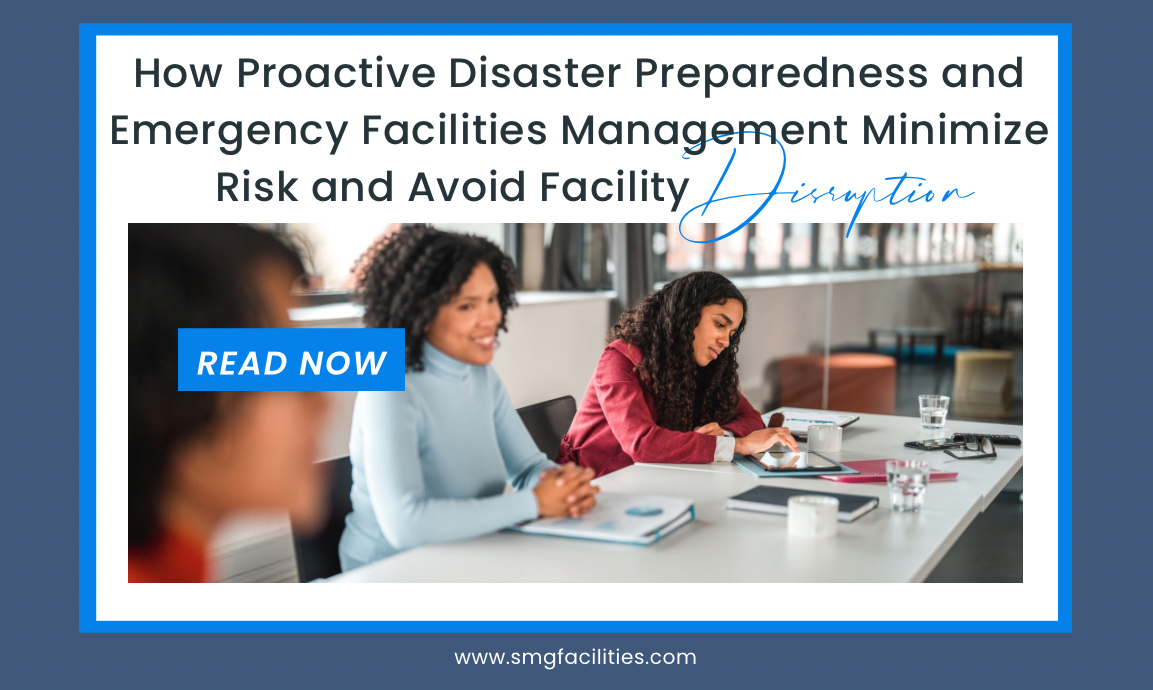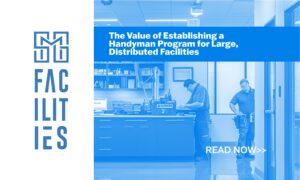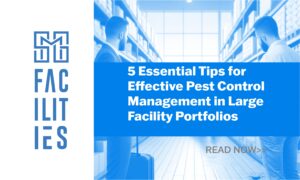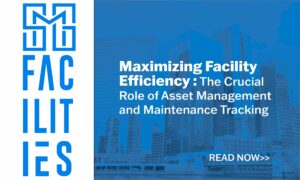Today’s facilities managers have a ton of responsibilities and concerns on their plates. Even if the facility appears in working order and without maintenance needs, the next disaster is around the corner. And a lack of planning will only contribute to higher costs and disruption in the long run. Fortunately, facility managers can embrace disaster preparedness plans and strategies by thinking about what might happen and what’s necessary to recover. As explained by FacilitiesNet, “This is often defined in the organizational disaster recovery documents. Then, determine the facility systems that support these areas and functions. The normal and emergency operations of the identified system must be thoroughly understood, necessitating the review of building one-line diagrams and sequence of operations. Note redundancies and system interdependencies.” Let’s take a closer look at the value of proactive disaster preparedness and how facilities services can mitigate risks through preventive maintenance and help your team get on the road to recovery faster.
The High Cost of Not Planning for the Inevitable Disasters, Disruptions, or Emergencies
Thinking about disaster preparedness in facilities is not necessarily limited to weather-related emergencies. For instance, the types of catastrophes from the past ten years, reports FacilitiesNet, include power equipment failure, human incurred damage, such as vandalism, medical incidents, fires, gas and electrical issues, safety concerns, and even earthquakes. While Mother Nature may play a role in many disasters, the others can quickly add up to much higher costs. Power equipment failure accounts for the higher prevalence of all disasters within facilities. And given that the average cost per catastrophe sits at just over $500,000, it’s essential to realize that a lack of planning will cost significantly more than anticipated. Even when averaging building types and the full scope of disaster types, the average remains near $200,000. But proactive measures can help, and it’s essential to know why.
Why Proactive Measures Help to Mitigate Risk and Lower Costs Before, During, and After an Event Occurs
Proactive measures for disaster preparedness revolve around identifying potential risks and establishing best practices to mitigate their impact. That means knowing what might happen, what services may be necessary to reduce disruption and how an organization can recover faster. Since many disasters focus on the facility’s quality and stability, including its equipment and overall aesthetic, on-demand maintenance and emergency services are essential. And when disaster strikes, especially large-scale disasters, field service vendors are in high demand. For that reason, having a team of experts with an established network of pre-vetted vendors and dedicated resources to dispatch technicians to your building immediately will make the most significant difference. And that’s true regardless of whether a multi-site portfolio or looking to outsource facility services for a single location. Additionally, preventive steps, like keeping assets and power equipment properly maintained, will go a long way to preventing some of the most specific disaster types.
Tips for Building Proper Disaster Preparedness Plans for Facilities Continuity
Building proper disaster preparedness plans for facilities continuity begins with understanding your needs. In other words, what type of assets exist, the repair history and condition of those assets, what are their maintenance schedules and what is necessary to keep them going despite disaster? Those questions hint at a few overarching tips that can help your team proactively plan for and be ready to execute a disaster preparedness plan, including:
- Clearly defining individual responsibilities to address different disaster types.
- Creating evacuation routes and ensuring proper signage to avoid unnecessary loss of life or injury when disaster strikes.
- Conducting training among team members to help everyone be ready.
- Having a team of experts and field service vendors can avoid disruption to the guest experience when possible.
- Being able to scale vendor services for the biggest and costliest disasters rapidly.
Overcome the Risks of Disaster Preparedness Planning by Partnering With an Expert in All Things Facilities Management
Today’s facilities managers must understand a grim reality; the next disaster is coming. And while the catastrophes of 2020 are fresh in our minds, it’s essential to realize that the key to success rests with integrated facilities services, combining a whole lineup of on-demand, preventive, scheduled, and on-off resources that can help your team be ready at any time when disaster strikes. Connect with SMG Facility Services to learn more about how your organization can embrace disaster readiness while reducing facilities management costs today.





